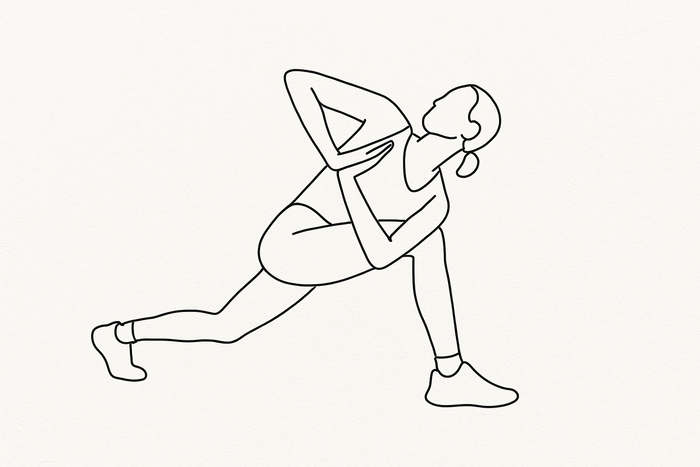Before I learned how to read waves, I learned how much surfing exposes every tight spot in your body. During my time teaching yoga at Alive Beach House in Nicaragua, my mornings always started the same way: yoga at sunrise, a surfboard under the arm one and a half hours later. These asanas became everyone’s favourite because they work: They wake up the spine, open the hips, strengthen the upper back and prepare your nervous system for the waves.

wrist preparation: essential but often forgotten
Paddling and popping up require strong, mobile wrists. Gentle circles, palm stretches, and placing the backs of the hands on the floor with minimal weight build resilience. This is the small thing that prevents big issues.
cat–cow: switch on your spine before paddling
Start on hands and knees. As you inhale into cow pose, let the pelvis tilt first and allow the movement to travel gradually up the spine until the chest opens. On the exhale, round gently into cat, drawing the lower belly in and letting the spine curve from the base upward.
Keep the shoulders relaxed and the movement smooth. Take 8–12 slow rounds. This gentle articulation wakes up the whole back and prepares it for the long, steady extension you’ll need while paddling.

downward dog: lengthen everything (especially the back line)
Hamstrings, calves, shoulders, back—downward dog reaches them all. Add small bends in the knees, shift the weight, and create space in the body. This counterbalances the constant compression surfing creates. For the shoulders, focus on an external rotation of the upper arms so the armpits “look” toward each other. This creates space across the upper back and improves mobility where surfers often feel tightness from paddling.
low lunge: open the hip flexors for effortless pop-ups
Tight hips are the enemy of clean pop-ups. Set up a simple lunge, drop the back knee, and focus on lengthening the front of the hip. Keep the ribs soft, spine long. After 5-10 breaths, switch sides. This alone can make transitions on the board noticeably smoother.
twisted lunge: improve rotation + establish balance
Rotational mobility is essential for reading the wave, turning, and finding your stance. From a low lunge, twist toward the front leg. If it is available to you, place your hand over your chest and lift your back knee. Keep the pelvis stable and let the rib cage spiral. This prepares your whole torso for dynamic movement on the board.

baby cobra: build the upper-back strength you’ll rely on later
The paddling position can quickly exhaust the upper back. Baby cobra strengthens the exact muscles that support your chest while paddling—without collapsing into the lower spine. Place your hands directly under your shoulders and let the tops of your feet rest on the floor. Take an inhale into the middle of your chest; feel that subtle lift from the inside. As you breathe in, slowly roll your shoulders up, back, and down to create space across the collarbones.
On the exhale, activate your lower abdominal muscles so the pelvis stays stable and the lower back doesn’t collapse. Inhale again and lift your upper back, not by pushing with your arms but by engaging the muscles along the spine. Keep the neck in one long line with the rest of your spine—no crunching, no reaching. Your legs are active.
A good way to check that you’re not “cheating” is to briefly lift your hands off the floor. If your chest stays lifted, you’re in the right place. Hold for at least five slow breaths and repeat this sequence at least three times. This is exactly the strength paddling requires—and it builds surprisingly fast when you practice with intention.
breath observation: a short reset before you enter the water
Take a moment simply to notice your breath. You can lie on your back or sit comfortably—whatever feels natural. Close your eyes and pay attention to where the breath enters the nose, the exact point where cool air touches skin. Then follow it all the way in.
Notice the length of your inhale, whether it’s smooth or slightly uneven. Watch the exhale soften the belly and chest. There’s no need to change anything; the act of observing is enough to settle the nervous system and sharpen your focus.
A couple of minutes like this creates the most grounded transition into surfing. You arrive at the water clearer, calmer, and more aware of your own internal rhythm—which tends to make everything on the board feel just a little easier.

why this routine works so well for surfers
Surfing is a full-body practice: mobility, strength, breath control, and relaxation all matter. This short sequence prepares your body in exactly the way surfing requires—by waking up the spine, opening the hips, strengthening the upper back, and grounding the mind.
